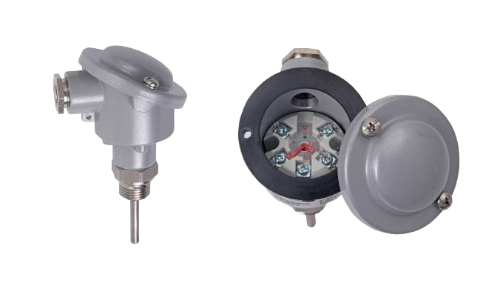- Temperature sensors by application
- Construction technology
Construction technology
ifm one-piece design
Typical RTD assemblies use a head chamber design. See below for a summary of issues with this design. Many of ifm’s temperature instruments consist of a fully welded 316 stainless steel IP69K hermetically sealed construction. The fully calibrated and ready-to-install one-piece design solves all of the typical drift issues of head chamber systems.
- No matching, assembly, or calibration necessary.
- Many units offer additional features such as 4-digit numerical display or status LED to verify operation at point of use.
- Since the sensors are fully assembled, calibrated and tested at the factory, many sensors come with a downloadable certificate of calibration. ifm can offer this free service as calibration certainty is built into our production and quality systems.
Other benefits of ifm’s one-piece construction include:
- Since the RTD and electronics are integrated, they are calibrated together in production. This provides a single value for accuracy as opposed to the additive accuracy for multiple components.
- Ordering is easy with a single 6-digit article number instead of very long part numbers (20 digits or more) specifying each component.
Instruments using this construction are the TA, TD and TCC families.
Competitors head chamber
One of the most common construction methods of temperature instruments is the head chamber assembly. It consists of a probe body, process connector, joining nut, head chamber, and either a terminal or a transmitter terminal puck. These individual components are fitted together and hand-wired to screw terminals.
The completed assembly has several drawbacks:
- It is an open system. All of the components are subjected to atmospheric moisture. This moisture can easily affect the sensitive milliohm signal causing drift.
- Many applications are subjected to corrosive materials. These compound the effects of drift and degrade signal accuracy.
- Since head chamber systems require assembly, proper calibration is difficult to ensure. Any change, such as tightening terminals or changing the transmitter puck, will require the complete system to be calibrated. These types of open systems need constant calibration adjustment and have a high cost of ownership due to the required maintenance.
